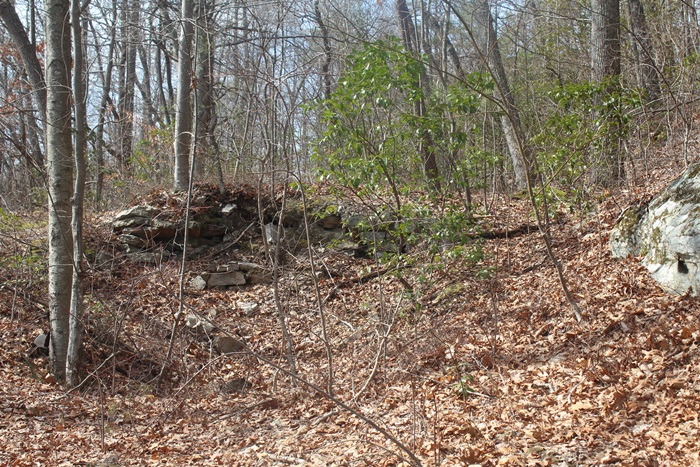I have always had an interest in the sand and silica mining that took place in Mendota long ago. My grandfather mentioned it here, and later, when I worked for AGC Glass, I was taught how important sand was in glass making. I kinda sorta knew where the mining took place.
I finally got to visit this place. It’s on private property and difficult to get to. It took me a while to mooch my way into getting an invite. I took a lot of pictures and posted three or four on Facebook. What was fun was talking on Facebook with my cousin, Terri Collier McCroskey, and Karen McCormack Quesenberry after sharing the pictures.
Terri’s dad, Ralph Collier, had worked at the Clinch Mountain Silica Sand Mine when he was young. Karen’s grandfather, Cleveland Johnson, also worked there and after breathing in the silica dust, he died of silicosis (a lung disease caused by silica dust) leaving behind a widow and six orphans. Clinch Mountain Silica Sand Corporation operated from 1920 until 1931 at which time it declared bankrupcy.

I was up at the quarry Saturday which is 4000 ft. up Clinch Mountain. Here’s the quarry site and although almost 100 years have passed, there is still evidence of a sand quarry. It was here, in 1921, according to the “Pit and Quarry” trade magazine that the sandy rocks were crushed, pulvarized and screened before being loaded into the tram cars.

The sand is gray and sparkly on this part of the quarry site.

Here’s what the site looked like so many years ago. I found this in an ancient rock trade magazine on Google. It’s the staging area where the sand was moved into the carts that would then zoom down the tram line.

Here’s the same area today. You can see the remains of the stone foundation.

The carts then went down the tram path. The full cart went down which sent the empty cart back up!

From that same magazine I found, here’s a picture of the actual tram. I was so excited when I found this. I also learned this tram must have been busy as it had a capacity of between 300 and 400 tons every 10 hours. Also, even the quarry at the top of the mountain was electrically driven by water power.

So it was a very interesting Saturday. Thank you for reading RiverCliff Cottage.
![]()

Thanks for the info. Want to go there sometime
That is very interesting. Thanks for sharing. I learned something interesting a few months ago. Of course, we all learned in elementary school that eons ago the Appalachian Mountains were the highest mountain range, higher than the Rockies or even the Alps are today, What I recently learned is, our sandy Atlanta Ocean beach is not a result of the ocean itself, but the erosion of those colossal mountains over the eons, sand which is still evident on these mountains.
I did not know!
Thanks, Eva. I’ve been told the silica there was of very high quality.
One of the articles discussed the quality of the silica. I love learning about this but would just as soon hope it stays up there sleeping!!
Eva,
What a wonderful glimpse of history! Love the before and after pictures! Thanks for sharing. 🙂
Happy day friend!
karianne